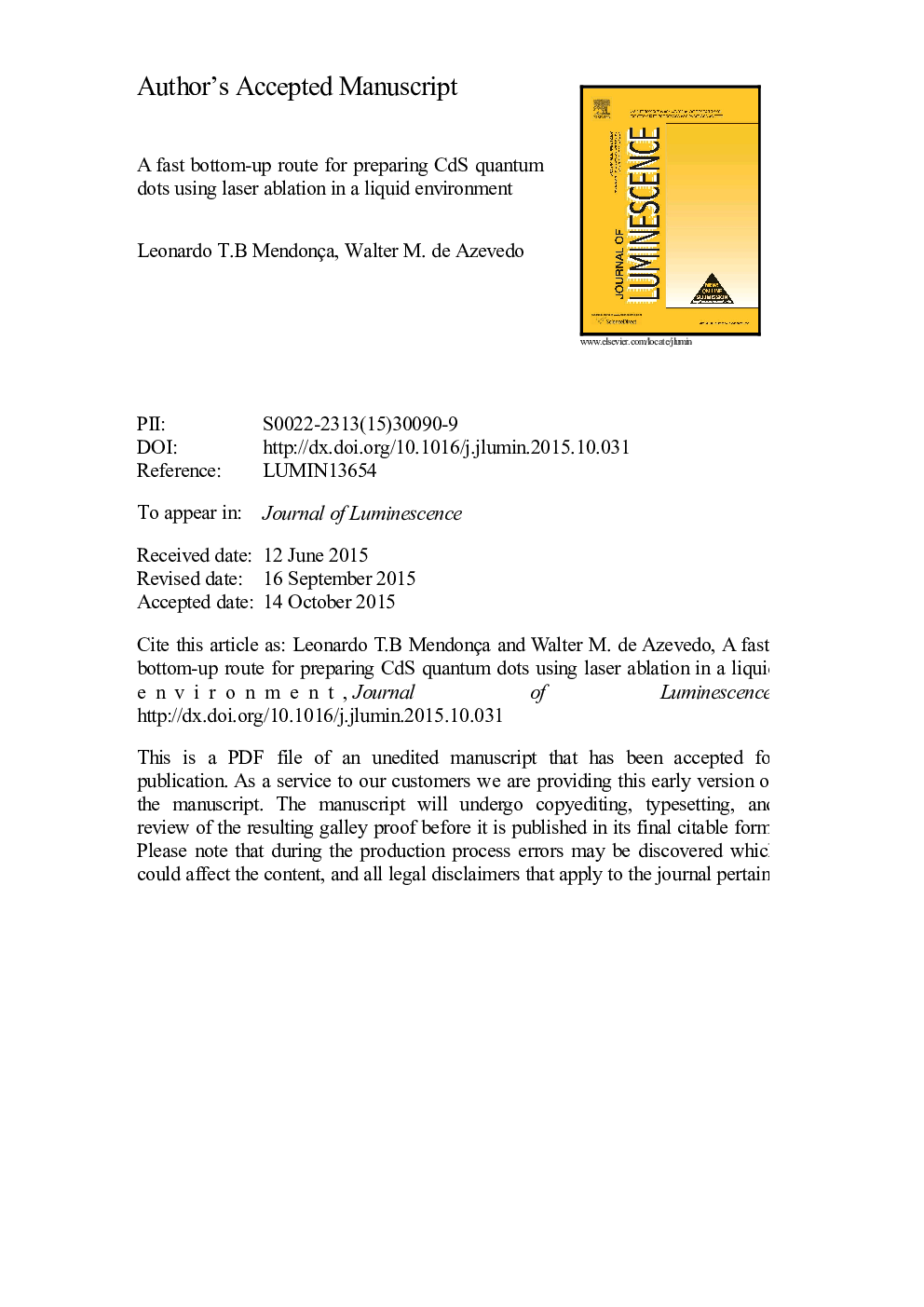| Article ID | Journal | Published Year | Pages | File Type |
|---|---|---|---|---|
| 5398678 | Journal of Luminescence | 2016 | 15 Pages |
Abstract
In this paper bright, water-dispersible and very stable CdS quantum dots (QDs) emitting from 400 to 700Â nm with a narrow size distribution were synthesized in aqueous medium using a combination of the laser ablation technique and the action of thioglycerol as a catalyst for the hydrolysis of thiosulfate and as a stabilizing agent for the nanoparticles. In this case, instead of using a conventional, highly toxic sulfur source like H2S, the decomposition of thiosulfate catalyzed by thioglycerol is used to produce S2â ions that interact with Cd2+ ions produced by the ablation of a Cd foil by the second order light of a pulsed Nd:YAG laser. The ejected Cd2+ ions react with S2â to form CdS quantum dots. Spectroscopic, X-ray and TEM measurement analysis showed that 2.75Â nm monodisperse CdS QDots were synthesized and exhibited bright photoluminescence in the yellow-orange region of the spectra when excited with 355Â nm with a quantum yield of 3.25%.
Related Topics
Physical Sciences and Engineering
Chemistry
Physical and Theoretical Chemistry
Authors
Leonardo T.B Mendonça, Walter M. de Azevedo,
